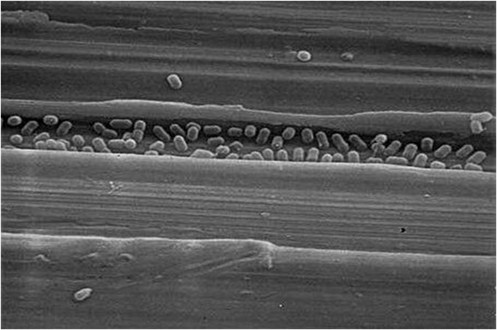These specific types of antimicrobial-resistant bacteria are resistant to vancomycin, the drug often used to treat infections caused by enterococci. This bacteria however is not immune to Antimicrobial Copper

Vancomycin-Resistant Enteroccocci are bacteria that are normally present in the human intestines and in the female genital tract and are often found in the environment.
VRE can cause life-threatening infections in humans, especially in the healthcare environment, where the naturally high levels of antibiotic resistance found in E. faecalis contribute to its pathogenicity and are a threat to patient safety.
The image below shows bacteria that survived a routine cleaning by finding shelter from the chemicals in brush marks or cracks on the stainless steel fixture it landed on.

Bacteria like VRE can survive on plastic or stainless steel surfaces for weeks to months. Currently accepted and implemented construction materials can actually provide a home for bacteria to survive and grow. It is important to remember this when focusing on the hospital built environment. Antimicrobial Copper kills these bacteria that threaten patient safety.
Read more on the other bacteria that Antimicrobial Copper is registered to kill.
- E. coli O157:H7
- MRSA : Methicillin-Resistant Staphylococcus aureus
- Enterobacter aerogenes
- Pseudomonas aeruginosa

*Laboratory testing shows that, when cleaned regularly, antimicrobial copper surfaces kill greater than 99.9% of the following bacteria within 2 hours of exposure: MRSA, VRE, Staphylococcus aureus, Enterobacter aerogenes, Pseudomonas aeruginosa, and E. coli O157:H7. Antimicrobial copper surfaces are a supplement to and not a substitute for standard infection control practices and have been shown to reduce microbial contamination, but do not necessarily prevent cross contamination or infections; users must continue to follow all current infection control practices.

